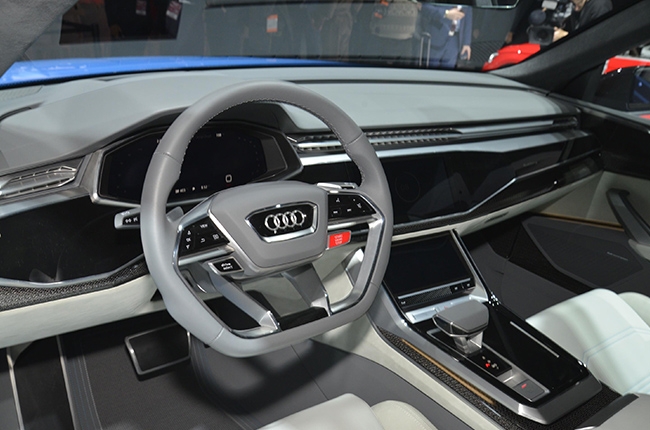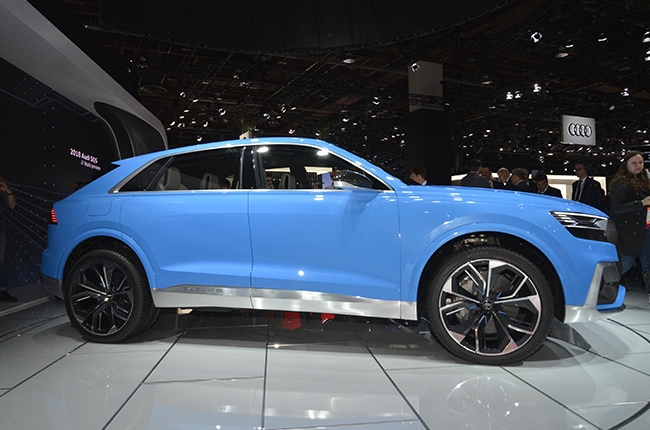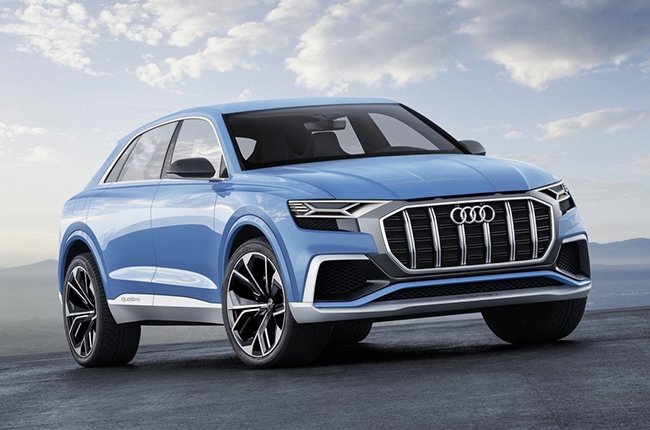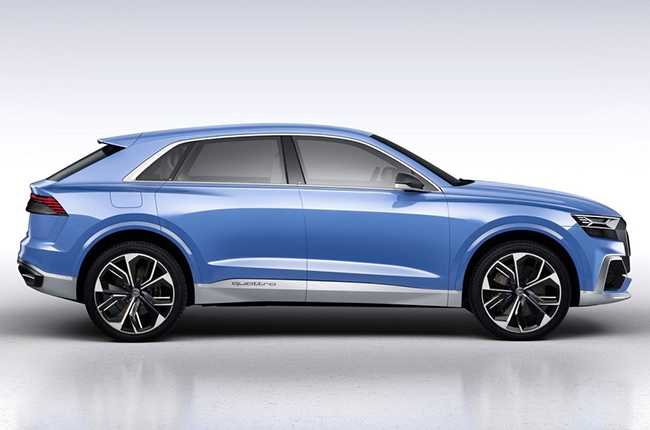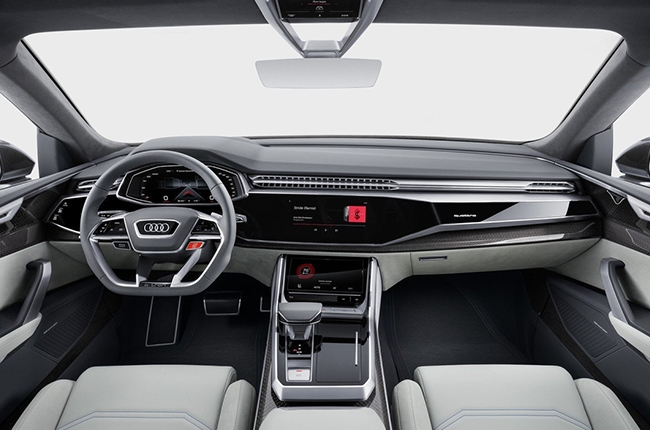
Making a big reveal at the 2017 North American International Auto Show (NAIAS) is the Audi Q8 hybrid concept, the German marque’s future flagship for the full-size SUV segment, set to launch in 2018.
At first glance, the Q8 hybrid concept is undeniably different from the current SUV lineup of the German marque.
It sports a redesigned octagonal grille, veering away from the current hexagonal shape of Audi's cars. This is then complemented by honeycomb inserts on the front bumper. Completing its agressive fascia is a pair of flat wedge-shaped open headlights, with glass-covered individual lighting.
In addition, the frameless door windows accentuate its flat roofline. Fenders, doors, and side panels are also restyled to achieve its athletic curve, emphasizing the flow of lines on the vehicle’s sides. Moreover, it features a long roof edge that provides shade on the flat window of its coupe-trim rear end.
Size-wise, the Q8 hybrid concept is said to fuse the spacious cabin of an SUV and the sleek, distinct trims of a coupe, without sacrificing the ample headroom in the rear seats. With its 3000 mm wheelbase, the vehicle will have bigger legroom for its passengers, as well as luggage area.
With a length of 5,029 mm, the Q8 concept is longer than the locally available full-size SUVs such as the 4,990 mm long Toyota Land Cruiser and the all-new 4,940 mm Honda Pilot.
Inside the cabin, the shift-by-wire console with which the driver controls the transmission is made floating above the center tunnel. It also features an instrument panel that extends inward the dashboard in steps. Furthermore, the central console and display surfaces are integrated into a aluminum-framed glossy black strip on the dash called the “black panel.”
For the occupants’ comfort, the seats are covered in a combination of fine Nappa leather and Nubuck leather in pastel silver. In addition, structured textile of a similar color of the leather elements covers the head restraints.
For power, the Q8 concept is equipped with a 3.0L TFSI combustion engine able to generate 333 hp with a 500 Nm maximum torque output. An additional electric motor can generate 134 hp with 330 Nm maximum torque output.

Combined, the system is able to generate 443 hp with 700 Nm torque, propelling the car from 0 to 100 km/h in 5.4 seconds going to a top speed of 250 km/h. It is then sustained by a lithium-ion battery with a capacity of 17.9 kWh.
All these are integrated into an 8-speed tiptronic with a decoupler. However, the Q8 concept won’t have the the NVIDIA Drive PX, unlike the Q7 showcased at the 2017 Consumer Electronics Show.
Latest News
-
MIAS 2025: GAC Motor Philippines brings excitement with M8 PHEV debut and exclusive offers / News
GAC starts the journey toward electrification with the unveiling of the M8 PHEV, a hybrid version of its luxury minivan.
-
MIAS 2025: Chery presents three new models for the PH market / News
The Tiggo nameplate gets three new additions as Chery showcased at the 2025 Manila International Auto Show.
-
BYD showcases its extensive lineup at the 2025 MIAS / News
At the 2025 Manila International Auto Show, BYD flexed its EV and hybrid lineup for the Philippine market.
Popular Articles
-
Cheapest cars under P700,000 in the Philippines
Jerome Tresvalles · Sep 02, 2024
-
First car or next car, the Ford EcoSport is a tough package to beat
Jun 18, 2021
-
Car Maintenance checklist and guide – here’s everything you need to know
Earl Lee · Jan 12, 2021
-
Most fuel efficient family cars in the Philippines
Bryan Aaron Rivera · Nov 27, 2020
-
2021 Geely Okavango — Everything you need to know
Joey Deriquito · Nov 19, 2020
-
Family cars in the Philippines with the biggest trunks
Sep 20, 2023
-
Head to head: Toyota Rush vs. Suzuki XL7
Joey Deriquito · Oct 28, 2020
-
Why oil changes are important for your car
Earl Lee · Nov 10, 2020
-
2021 Kia Stonic — What you need to know about it
Joey Deriquito · Oct 16, 2020
-
Top 7 tips for buying a used car in the Philippines
Joey Deriquito · Nov 26, 2020

